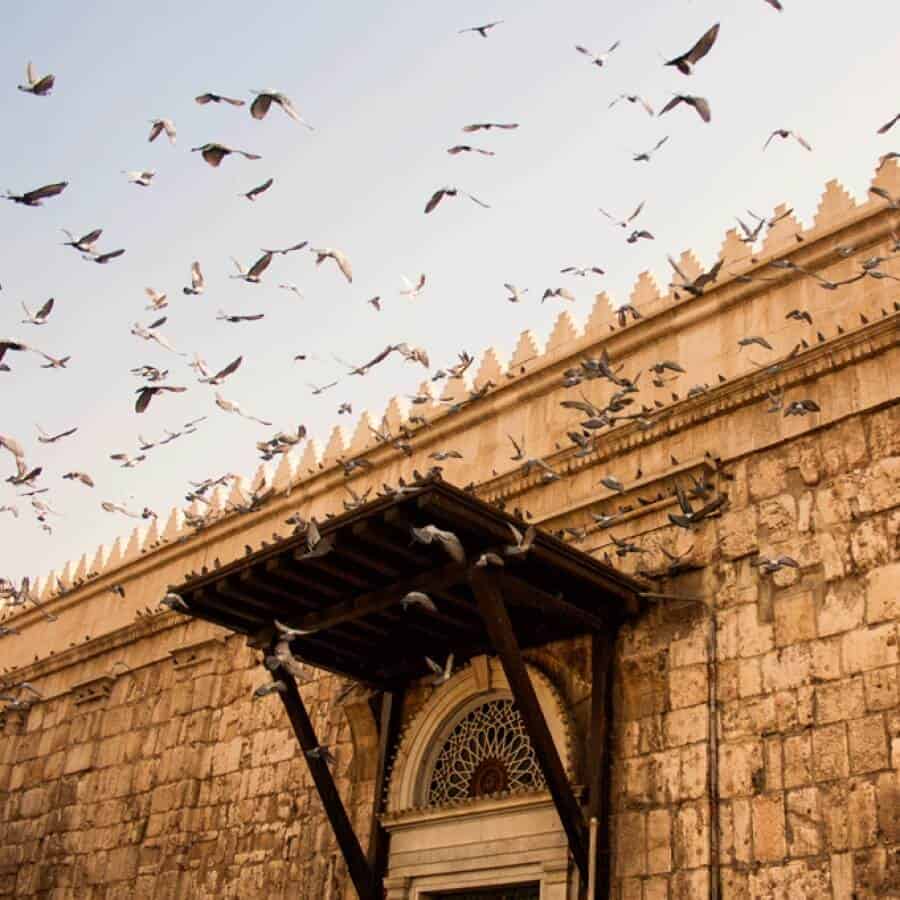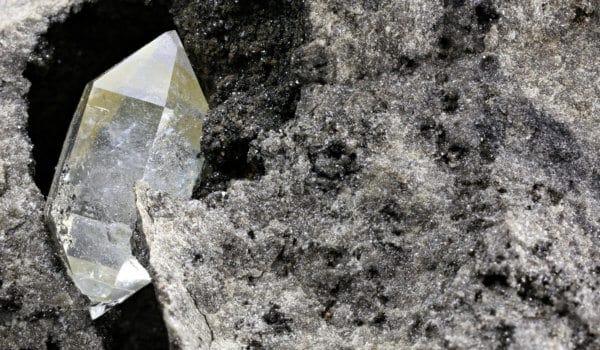We are continuing our Middle Eastern adventure, and now it is time to fasten our seatbelts and try to step out of our comfort zone a bit by traveling to Damascus, the capital of Syria and one of the oldest cities in the world. All of you know about the terrible civil war which has almost destroyed this beautiful country since it broke out seven years ago. The situation, however, is stabilizing as of the last quarter of 2017, and one of safest areas in the country is Damascus, which has suffered almost no damage during these years. And therefore tourism is reviving again in Damascus.
It is it premature to say that life in Damascus got back normal, but it is obvious, that number of people who are choosing this city as their travel destination is growing past two years. On websites such as Unusual Traveler and Lonely Planet you can see reviews from 2016 and 2017. Also, a Bulgarian filmmaker of Syrian origin, Joseph al Ahmad, visited Syria several times in 2015 and 2016 and made several short movies about Damascus. Moreover, the prominent Business Insider website has recommended the amazing nightlife in Damascus.
Damascus- Life continues/Short film by Joseph al Ahmad
How to get there?
The best option is to fly to Beirut from one of several international airports. Beirut is only 120km from Damascus. There are still no flights into Damascus because of safety reasons related to flying over Syrian territory, but taxi service is available between Beirut and Damascus with a journey that takes only two to three hours. There are only a few military checkpoints which require passports between the Lebanese-Syrian border and Damascus, and after passing by the destroyed vehicles alongside the road and bombed-out houses by the highway you will find that there are almost no signs of war once you enter Damascus itself .
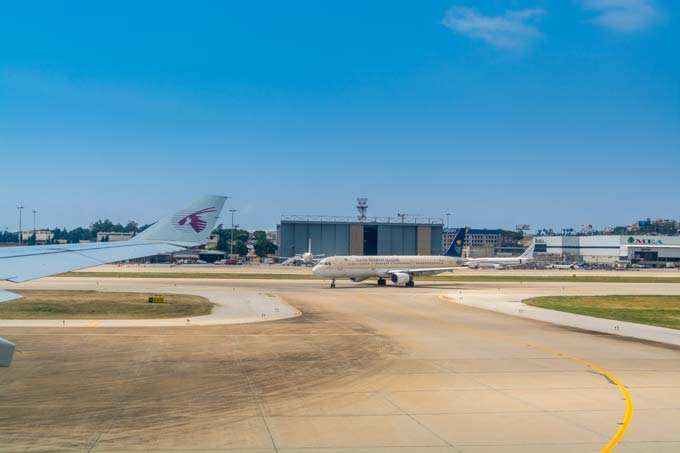
Beirut airport, Lebanon
What to know about the city?
To know a city, you must know its history. Damascus is one of oldest continuously inhabited cities in the world, with a history and culture that can be traced back about 7000 years. The oldest civilizations in the Middle East, such as the Sumerian, Assyrian, Aramean, Ancient Egyptian, Babylonian, and Ancient Greek all left their traces in Damascus. During ancient times Damascus was a prosperous city, and many conquerors wanted it. Later, Damascus was successful under the Romans and the Byzantines as well. After the 7th century it became one of the major Arab cities and was inhabited by Arab Muslims and Arab Christians. Between the 7th and 13th centuries it was the main cultural, political, and commercial center of the Arab golden age. Later, it was under the Ottomans (from the 16th century until the end of WWI) and then the French for a short time; and finally, in the mid-20th century, Damascus became the capital of modern Syria. All these periods and cultures have left their influence in Damascus.
What to visit and learn?
Old Town
Damascus is real city of contrasts, composed of new and modern avenues and also an Old Town of teeming, narrow streets with an undercurrent of mystery. The first and best advice is to walk around the Old Town since it offers the most interesting sights. The Old Town of Damascus is a real maze which seems frozen in 15th or 16th centuries. Most amazing is the fact is that the Old Town is still encircled by medieval fortifications. There are many narrow streets which remind the visitor of the buildings of classical Arabic architecture, which are of a dark yellow or brown color and made from stone. Also, there are a few streets built in the Ottoman style during the 19th century which call to mind the Turkish houses in the Balkans.
Passing along the Old Town streets, you will experience real charm and the chaotic atmosphere of old Arab cities – with the sight of many people walking around and the smell of coffee, cinnamon, and shisha in the streets. You will see many different sorts of people since Syria is a very diverse and secular country. You will see couples holding hands and dressed in a modern style, and you will see many girls without hijab who walk about freely without encountering hostility. And at the same time, there are many older women who wear hijabs. Seeing Muslim and Christian priests walking together is totally common in a country where Christians compose 12% of the population. There are many families walking together, too. The warzone seems thousands of kilometers away, and not just the 15km that separates the streets of Damascus from the fighting.
There are shisha bars on almost every corner, so if you get tired you can refresh yourself with strong Arabic coffee and good shisha. While you are in the Old Town you must check out a few of the many souvenir shops where you can buy scarves, traditional hats, belly dancing clothing, shishas, beads, necklaces, sabers, carpets, tea and coffee sets, and much more.
The Temple of Jupiter
This is one of oldest and best preserved ancient buildings in Damascus. The temple served the ancient Roman religion and was built under Augustus. The decline of the Roman Empire and the rise of Christianity and Islam led this temple to be abandoned. What now remains is the stone-built main gate and many pillars and arches. Next to the temple ruins there is the Church of John the Baptist, which dates from the 6th century. Nearby is the Umayyad Mosque, which is the largest Muslim place of worship in Damascus. This demonstrates the tradition of coexistence in Damascus, and the city’s multi-cultural history.
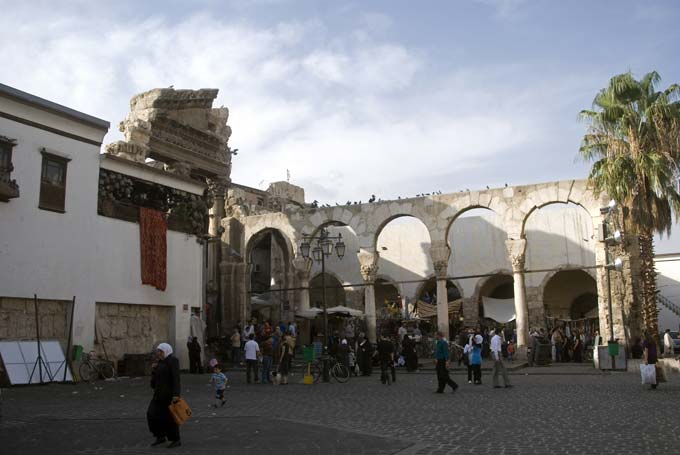
The Temple of Jupiter
Al Hamidiyah Souk
This is the largest bazaar in Damascus, and it has existed on the same spot for the last 500 years, in the central part of the city between the Temple of Jupiter and the Citadel. The current version dates from the Ottoman era and was built by Sultan Abdul Hamid I in the 18th century. The Souk is 600m long and is covered thanks to a stone and metal roof. The atmosphere, the sounds, and the smells are an adventure from an ancient time. You can find anything in the Souk, including vegetables, fruits (such as figs, oranges, lemons, bananas, apples, dates), and fresh meat (lamb, beef, chicken, and fish). You can also find there many bakery shops selling various types of breads, and salty and sweet products such as buns, halva, baklava, and rahat. There are also several fast food shops offering falafel and shawarma, a version of kebab in a bun that is commonplace in Syria, Palestine, and Lebanon. In the Souk there are many fresh juice stands where you can refresh yourself during hot days. Also there is large variety of clothes as both traditional and modern ones are sold here.
The Citadel
This is one of the largest fortifications in Damascus. It was first built by the Seljuk Turks in the 11th century. Later, the fortification was expanded by Sultan Saladin from the Ayyubid dynasty. The Fort has always defended a place of strategic importance, and therefore the Crusaders and the Arabs fought for it bitterly. During the Ottoman era it also had a strategic importance. The Citadel is well preserved and is popular with tourists. You can see its walls, arches and windows and imagine how it looked in the past.
The Umayyad Mosque
It is one of the oldest mosques in Damascus and is definitely the largest. It was built in the 8th century under the Arabic Umayyad dynasty on the spot where the Byzantine St. John’s Church previously stood. Between the 7th and 8th centuries it served as a mosque and a church at the same time while after the 8th century it was exclusively a mosque. Although it is a mosque, it is devoted to St. John since he is a respected figure in Islam, too. Muslims believe that Jesus (in Arabic, Isa) will return to earth at this place. The Mosque that the visitor sees today is very beautifully decorated with a white marble floor, fountains, carvings, and extensive ornamentation in in blue, green, and golden colors. The Mosque has three minarets which date between the 8th and 15th centuries. You can walk around and visit important sites in the Mosque such as the domed shrine where legend holds that the head of St. John is located and preserved. In the same Mosque there is the domed shrine of Saladin, a sultan of Syria and Egypt during the Ayyubid dynasty. He is famous as a great statesman and warrior in the Arab world who fought against the Crusaders but deeply respected the Christian faith. You can stay in the Mosque to experience prayer times or to listen to the muezzin sing and watch how many people come here to pray.
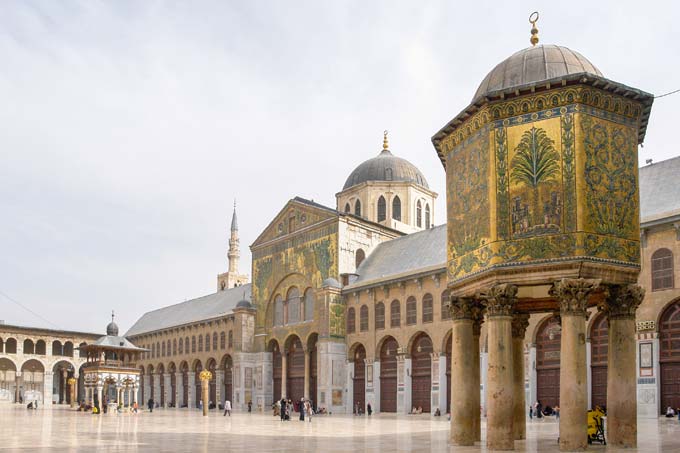
Umayyad Mosque in Damascus
The Marionite Cathedral of Damascus
Among the many churches in Damascus, this one stands out as one of oldest, not only in Damascus but in the world. It dates from 200AD. This is the Greek Orthodox Church of Antioch. It has a very beautiful interior composed of frescoes and icons similar to other orthodox churches. The Church is composed of three sections – St. Mary’s chapel, St. Catherine’s Chapel, and St. Thecla’s chapel, and each chapel offers unique relics. Its exterior, especially its towers, are very impressive. You can visit this or other churches during services and listen to the priests chant in Greek, Arabic, or the ancient Aramaic language. It is also possible to enter the church during a wedding and experience a ceremonial and romantic atmosphere.
Al Azm Palace
This is one of the largest palaces in Damascus and the biggest Ottoman building in the city. It
was built in the 18th century by Asad Pasha al Azm, the Ottoman governor of Damascus. The building is the best example we have of the palace architecture of old Damascus. Inside you will see beautiful decorations, lusters, carpets, beds, pillows, dishes, candlesticks, and carvings all in Arab style. While observing all these amazing decorations you will walk over marble floors. Many walls of the building’s interior are covered by wooden panels painted in various scenes from nature. In several rooms there are figures made of wax which depict people dressed in traditional clothing.
Time for a good meal
After a day of walking and sightseeing, you will need a good meal. Fortunately you are in the right place as Syrian cuisine is one of the best in the region. All countries in the Levant region – notably Syria, Palestine, and Lebanon – offer wonderful food. In addition to the previously mentioned street food, you will find many good restaurants in Damascus, and at reasonable prices. It is best to choose a traditional style restaurant. Typical starters are mezze, which contain Arab bread, pickled eggplants, hot pepper dips, and minced meat. Main courses usually feature dishes such as grilled lamb or beef kebabs with eggplant, onion, and hot peppers, often served with kibbeh composed of cracked wheat, onions, cinnamon, lemon, and minced beef or lamb. For drinks you can choose from lemonade with mint (known as polo here) or ayran (a type of yogurt). For desert you can have halva, kanafeh, tulumba, or baklava. If you do not want Arab food in Damascus there are many restaurants offering pizza and pasta, and even one Chinese restaurant. If you are traveling on a budget you can have shawarma (a type of kebab in a bun) on the street, or falafel. But remember to buy these things only where you see a lot of people buying.
Damascus never sleeps
You can find almost anything what you want in Damascus. Both in the Old Town and in the modern neighborhoods which serve as shopping, entertainment, residential and financial hubs you can find interesting bars, pubs, and clubs. If you want traditional entertainment you can find a spot in Old Town where you can smoke shisha, drink tea, and watch exotic belly dancers. There are many bars and pubs with live rock or pop music. In-club DJs are very popular.
You will quickly see that the war hasn’t broken the friendly and positive spirit of the Syrian people, who are by nature warm and hospitable, and who enjoy welcoming foreigners. Syria’s young people are particularly open minded and easily engage in discussions with a good knowledge of English. Most pubs, bars, and clubs offer alcoholic drinks including such world-famous beverages as Heineken, Absolute Vodka, Jack Daniels, and others.
Accommodation
You can check out city center hotels on the internet. Airbnb can be safe and reliable now too.
Photos: Shutterstock
Support us!
All your donations will be used to pay the magazine’s journalists and to support the ongoing costs of maintaining the site.
Share this post
Interested in co-operating with us?
We are open to co-operation from writers and businesses alike. You can reach us on our email at [email protected]/[email protected] and we will get back to you as quick as we can.
